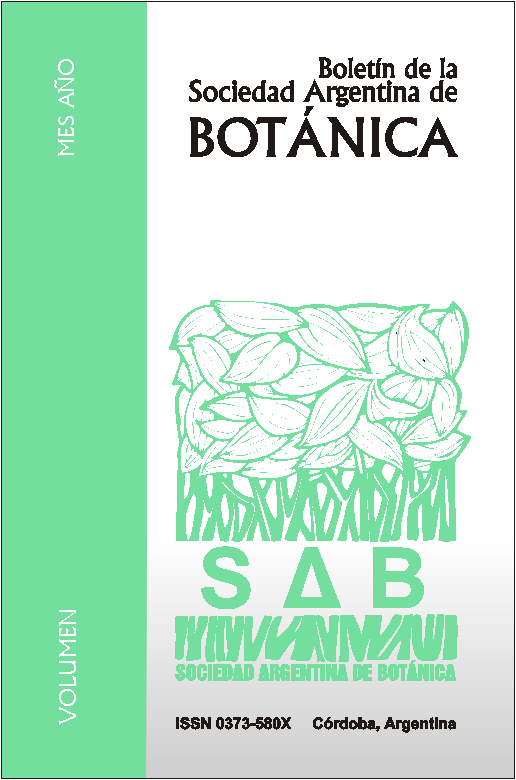Ecoanatomy of southamerican ebony, ‘guayacán’ (Libidibia paraguariensis, Fabaceae).
DOI:
https://doi.org/10.31055/1851.2372.v52.n1.16907Keywords:
Libidibia paraguariensis, bark, growth rings, heartwood, sapwood, xylem.Abstract
Ecoanatomy of southamerican ebony, ‘guayacán’ (Libidibia paraguariensis, Fabaceae). The wood of Libidibia paraguariensis (D. Parodi) G. P. Lewis, “guayacan” is homologous to that of Diospyros ebenum J. Koenig “ebony”. It is a wood with technological and organoleptic characteristics that give
excellent quality and significant future potential. For this reason study objectives were: (1) deepen the knowledge of anatomical qualities of the wood and bark; (2) analyze sapwood-heartwood ratio, and (3) characterize the growth rings. The study was conducted using samples from Guasayán, Santiago del
Estero, and Villa Rio Bermejito, Chaco (Argentina). Six trees from each site were selected randomly. A wood disk from the main shaft of each individual, at a height of 1.3 m was achieved. The description of the wood and bark was performed. The relevant anatomical character with high diagnostic value was full
stratification of radios. The rings are demarcated, with an average radial increment (RI) average 3.57 mm, the growth is slow-medium, with thick sapwood. The xylem has corresponding features to a mesomorphic species. The outer bark with one or two accumulated periderms, presents dehiscence in thin plates, which is a diagnostic element for field determination.
Downloads
Published
Issue
Section
License
Provides immediate and free OPEN ACCESS to its content under the principle of making research freely available to the public, which fosters a greater exchange of global knowledge, allowing authors to maintain their copyright without restrictions.
Material published in Bol. Soc. Argent. Bot. is distributed under a Creative Commons Attribution-NonCommercial-ShareAlike 4.0 International license.





